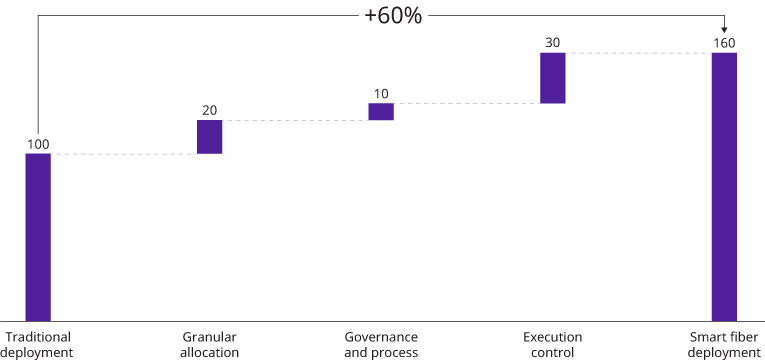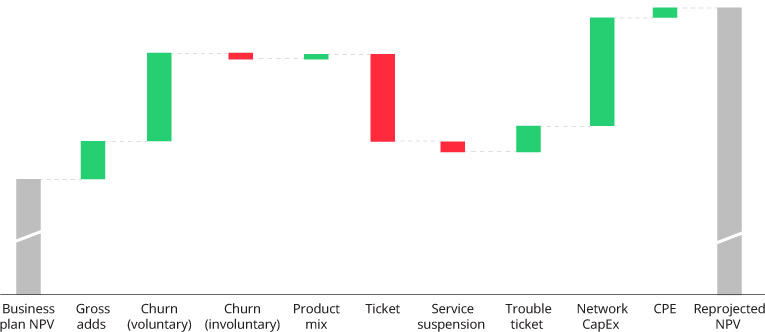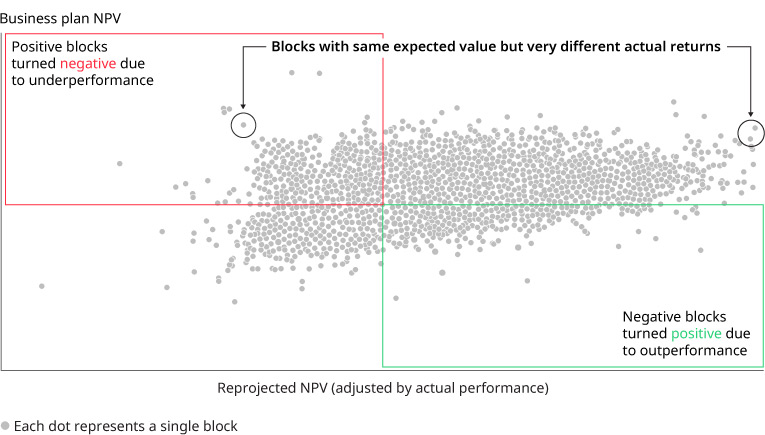Despite this, they have been struggling to achieve top line growth, with their aggregate return on capital employed (ROCE) estimated to have fallen from ten percent in 2013 to seven percent in 2019. Bold investment in 5G and fiber-to-the-home (FTTH) means that operators should be taking a more disciplined approach to network deployment management, particularly now that COVID-19 will stress test operating cash flows.
Fiber is the new black. Bandwidth consumption virtually doubles every two years. The increasing demand for higher internet speed is boosting fiber network deployment across the globe, with fiber already accounting for over half of total broadband sales, according to Omdia. Standard & Poor estimates operators invested nearly three billion US-dollars in fiber deployment in the third quarter of 2019 — a 26 percent year over year growth. The demand is also driven from the mobile business: 5G requires significantly greater transport capacity, which only fiber can meet. Moreover, incumbents see in fiber their opportunity to decisively discontinue their legacy xDSL networks and replace their operating costs with more favorable economics.
Headwinds in traditional business. In a digital world, operators can no longer monetize their data plans as they did historically in voice services — despite all the hefty investments for rising capacity. Further, telecommunications companies are losing space for other value chain players. Running over telecommunications networks, over the top media services (OTTs) have grown with products that satisfy customers’ needs and with a global reach that allows them to leverage these products effectively.
The combined effect urges for renewed ways to manage network deployment, with obsessive focus on financial returns. This includes optimizing CapEx allocation, but also tracking and managing operational performance after network assets are deployed. Such programs should be based on three key principles: network deployment decisions at a very granular level, robust governance and process, and absolute execution control. Combined, these principles can enhance the actual value of a new telecommunications network by up to 60 percent.
Exhibit 1: Net present value of each home passed
Traditional deployment, base 100

Source: Oliver Wyman analysis
IMPROVE DECISIONS
In the face of fiber expansion and 5G, CapEx allocation will continue to dictate the economics and ultimately, to a large extent, the stock performance of telecommunications operators. Although “optimally” deployed CapEx does not guarantee healthy returns, it certainly sets a cap on the value one can extract from a determined area. After CapEx is sunk on the ground of an intrinsically low-value area, the operator cannot do much but squeeze a dry lemon, completely overhaul its business proposition, or abandon it all together. Therefore, the pursuit for optimal capital allocation requires operators to pick and choose areas at a very granular level when deploying their network.
Some operators have already shifted to block-by-block optimization. In their analyses, they capture the socioeconomic, competitive, and topologic (meaning the ratio of high-rises to total premises) differences observed across neighborhoods. They also look at their economic effects on key value drivers such as sales, average revenue per user, churn, and default. In addition, operators consider the potential upside of decommissioning their legacy networks. The difference in the intrinsic value of each block can be staggering. In a recent engagement, the optimization of network deployment at block level resulted in a 70 percent uplift in the average intrinsic value of each home passed deployed vis-à-vis homes passed deployed previously in a more aggregate optimization, at a neighborhood level. Of course, this upside is lower in cases of nation-wide deployment targeting virtual complete country coverage, like in France and Spain, where cherry picking is not really an option.
The grasp on the intrinsic value at such granular level allows telecommunications companies to better determine what strategic initiative to pursue where, namely choosing:
- Where to deploy their own network
- Where to leverage alternative deployment models such as network sharing agreements, neutral networks, or a hybrid retail presence via franchises
- Where to assume a more traditional wholesale model
- Where to simply deprioritize
GET THE GOVERNANCE RIGHT
Regardless of how good the allocation decision is, loose links between allocation and actual implementation might still ruin the economics. This is particularly troublesome in countries like France, where deployment execution is frequently outsourced, requiring multi-party coordination. In a highly-granular optimization world, operators must robustly govern their network deployment to prevent broken processes carrying over decisions, ultimately leading to a network sunk in sub-optimal areas. Besides greater adherence to the implementation plan, well-established governance provides a longer-term planning horizon. This allows operators to take the steering wheel to pursue value by allowing timely deployment of more structural (and time-consuming) network layers. Without this outlook, operators find themselves trapped within their immediate network readiness and constrained to sub-optimal deployment from a financial standpoint.
Furthermore, it is important to involve local teams in the allocation process to foster buy-in across the organization, offer a natural reality check to financial models’ (theoretical) outcomes, and provide a recurring flow of relevant up-to-date information on local market developments to enhance decision making. Lastly, an effective governance will also ensure the relevant functions and stakeholders are in sync to effectively operate the newly deployed network, and ultimately boost commercial performance from the get-go.
In summary, an effective governance with transparent and well-coordinated processes is fundamental to build a leakage-free connection between “wants” (decision) and “haves” (effective network deployment).
CONTROL THE EXECUTION
Lastly, execution control stands out as equally relevant in driving value generation from fiber deployments. Typically, after a decision is made, the business plan is tacitly forgotten, and returns fall behind those in the spreadsheet. An adequate execution control aims to keep the eyes on the prize — through a disciplined financial lens that should permeate the entire organization and promote clear accountability for deviations vis-à-vis references of performance that supported the investment decision.
Actual performance should be tracked against the same business plan assumptions to determine whether the project is a success or failure, and, if so, correct course promptly. To that end, it is necessary to measure and control the performance of each value driver (including sales, voluntary and involuntary churn, product mix, average revenue per user, channel mix, trouble ticket rates, CapEx, and commissioning) and compare them against business plan assumptions. Further, it is important to enrich the typical measurement of past performance with a prospective forward-looking view of how much each deviation hurts or enhances the expected net present value. With such information in hand, the organization can properly prioritize efforts on key value-destructive issues.
Exhibit 2: Net present value (NPV) deviation by driver
Illustrative

Source: Oliver Wyman analysis
An effective control must move away from averages and track performance of each of those levers at a granular level, with all their intrinsic characteristics, “personalized” targets, and actual performance. By understanding the local issues, operators can apply the right medicines at the right doses, prioritizing top offenders at the local level. This disciplined approach to execution control has a positive side-effect to the entire project as the actual performance feeds back to the machine-learning-powered algorithm with real data, improving the accuracy of the CapEx allocation decision and ultimately boosting return on investment further.
Exhibit 3: Net present value — Business Plan vs. Actual
Illustrative

Source: Oliver Wyman analysis
Paving the way for next-generation fiber management. The enhanced programs for next-generation fiber management can maximize the financial returns of the network by up to 60 percent. To that end, these programs must encompass the three key principles of a granular and precise CapEx allocation, a robust governance and process, and an absolute execution control. In a context of a 30-year lifetime infrastructure asset such as fiber, the deployment decisions of today will largely dictate returns for decades to come.




